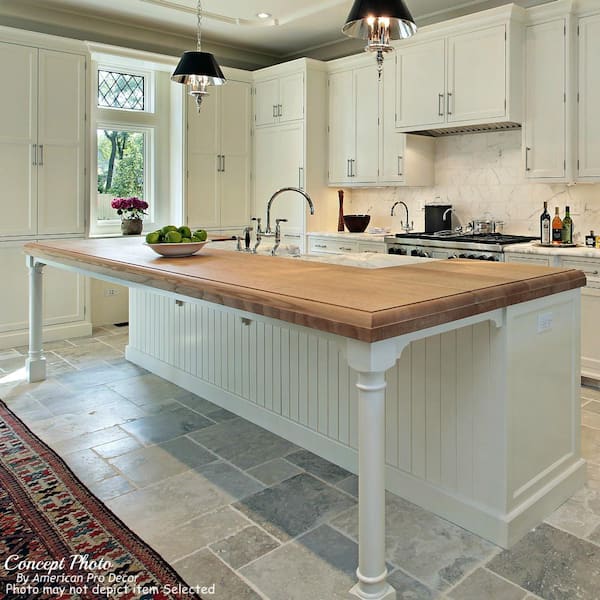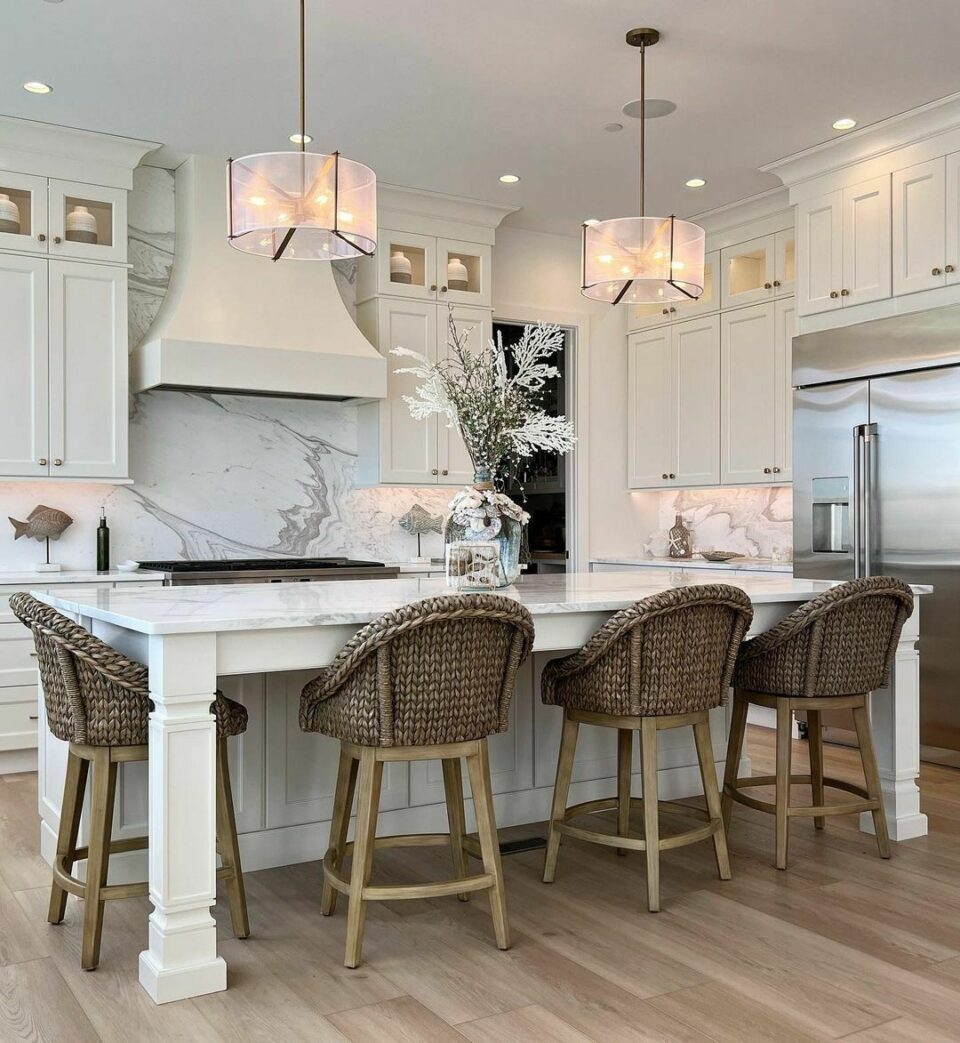The Significance of a Sturdy Kitchen Island Leg in Producing a Functional Food Preparation Location
A strong kitchen island leg offers as a fundamental element in establishing a functional cooking setting, supplying needed support for both the countertop and various kitchen tasks. As kitchen areas develop into multifunctional areas for food preparation, eating, and mingling, the option of materials and style considerations for island legs ends up being progressively essential.
Benefits of Sturdy Island Legs
Supplying vital support, durable kitchen island legs play a crucial function in enhancing the capability and toughness of kitchen islands - kitchen island leg. These legs not just bear the weight of the kitchen counter and any type of additional products positioned on the island, but additionally add to the overall security of the structure. A well-supported kitchen island guarantees that it remains upright and practical, even under heavy use, which is specifically vital in busy kitchen area atmospheres
Furthermore, tough island legs can enhance the aesthetic allure of the cooking area. They offer a strong framework that can complement numerous layout styles, from modern to typical. This flexibility enables home owners to tailor their cooking area islands according to individual preference while making sure that the structural stability stays uncompromised.
In enhancement to their helpful duty, robust kitchen island legs can likewise enhance safety and security. A steady island reduces the threat of accidents brought on by tottering or tipping, which is especially essential in houses with children or senior people. In addition, solid legs can promote a seamless flow of tasks, enabling efficient meal prep work and social communications within the cooking area space. Eventually, purchasing sturdy kitchen area island legs is important for a practical and visually pleasing cooking area.
Materials for Kitchen Area Island Legs
When selecting materials for cooking area island legs, sturdiness and aesthetic appeal are critical variables to think about. The most usual materials include wood, steel, and engineered timber, each offering one-of-a-kind benefits.
Hardwood, such as maple, cherry, or oak, is a timeless selection due to its toughness and classic elegance (kitchen island leg). It can hold up against considerable weight and is resistant to use, making it suitable for high-use cooking area settings. Additionally, hardwood can be tarnished or painted to match various kitchen area designs
Steel legs, commonly crafted from stainless-steel or functioned iron, provide a modern and commercial look. They are extremely solid and can support significant loads while being resistant to moisture and warmth, which is helpful in a cooking area. Metal legs can also be conveniently cleaned up, improving their practicality.

Layout Factors To Consider for Security
The selection of materials for kitchen area island legs straight influences the design considerations for security. When developing a kitchen area island, it is paramount to assess the weight-bearing capacity of the chosen products. Heavier materials, such as solid timber or metal, typically supply greater stability, especially under the anxiety of daily usage.
In addition, the leg style must incorporate appropriate geometry to enhance security. A broader base boosts the support area, reducing the risk of tipping or tottering. Consideration should likewise be offered to the height of the legs; out of proportion leg lengths can cause imbalance, jeopardizing the total stability of the island.
Moreover, the distribution of weight throughout the island is vital. Making sure that the leg placement aligns with the heaviest parts, such as appliances and kitchen counters, will further boost security.
Maintenance Tips for Long Life

Cleansing is another crucial element of maintenance. Depending on the material of the legs-- whether timber, metal, or composite-- ideal cleaning techniques must be used. For wooden legs, a gentle clean with a suitable wood and a moist towel cleaner will help protect their coating. Metal legs might need a light gloss to avoid corrosion and preserve their luster.
If the kitchen area island experiences hefty usage, take into consideration enhancing the legs with extra braces or supports to improve sturdiness. By complying with these upkeep ideas, property owners can ensure their cooking area island legs stay robust and practical for years to come.
Picking the Right Leg Style
Regular maintenance guarantees that kitchen area island legs remain useful and tough, but choosing the right leg style is just as important for both visual appeals and assistance. The option of leg design can significantly affect the general style and consistency of your kitchen.

Functionality is an additional essential element. Thicker legs or those with a strong base can sustain much heavier countertops and tools, enhancing the island's utility. Conversely, slim legs may create an airy appearance, suitable for lighter layouts yet possibly less supportive.
Final Thought
In summary, the importance of strong cooking area island legs can not be overemphasized in the production of a practical food preparation area. These legs provide crucial assistance, boost security, and add to the total visual of the cooking area.
A sturdy cooking area island leg serves as a basic component in establishing a functional food preparation environment, offering required support for both the kitchen counter and various cooking area tasks.Giving necessary support, tough kitchen area island legs play a pivotal function in boosting you could look here the performance and resilience of cooking area islands. Ultimately, spending in durable kitchen island legs is crucial for a practical and visually pleasing cooking location.
Factor to consider needs to likewise be given to the elevation of the legs; disproportionate leg sizes can lead to inequality, endangering the general stability of the island.
Wood legs give heat and a classic appearance, while metal legs provide a industrial and modern-day feel.